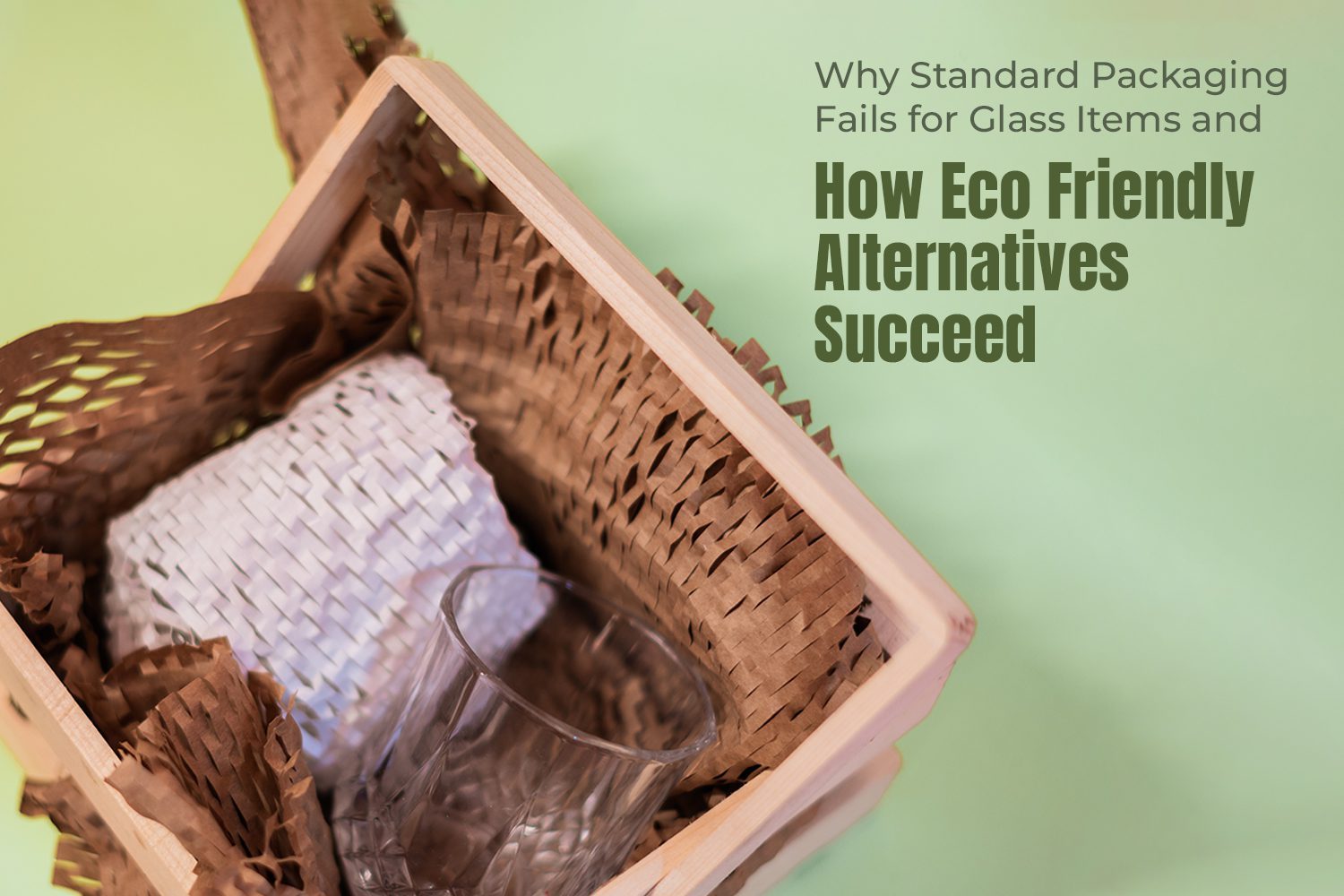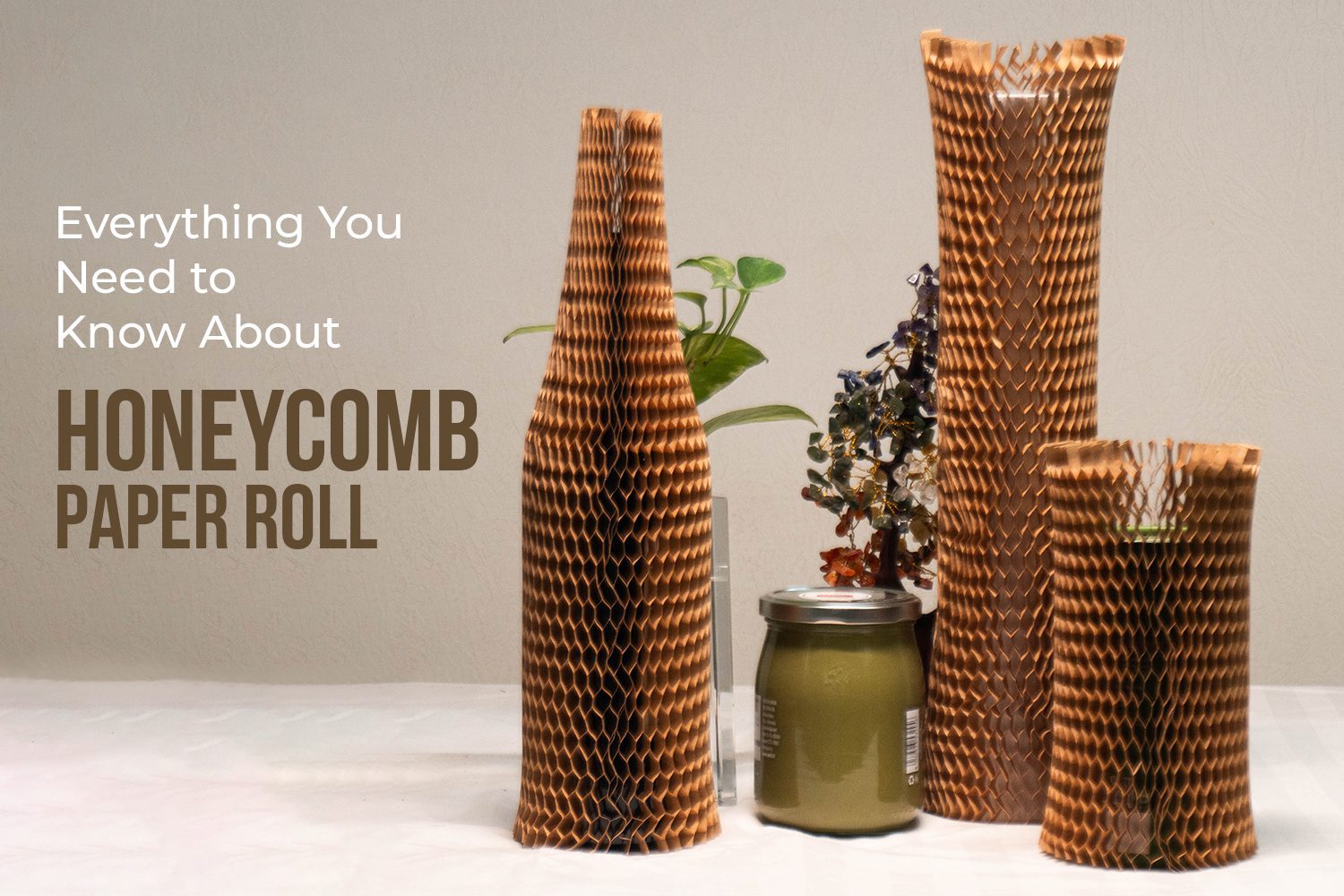The Eco-Friendly Evolution of Packaging

Eco-friendly Evolution of Packaging!
In an age where environmental consciousness is paramount and e-commerce is growing exponentially, reevaluating the way we package products has never been more critical. This blog dives into the world of eco-friendly minimalist packaging and how it can significantly reduce waste. We’ll also explore the role of EcoCushion Paper in this sustainable packaging revolution.
Let’s first understand what is sustainable packaging?
Sustainability in Packaging
The packaging landscape is undergoing a significant shift towards sustainability. Consumers are now more eco-conscious, and businesses are taking note. This shift has given rise to minimalist packaging, a design approach that prioritizes simplicity and efficiency. The goal of sustainable packaging is to minimize waste throughout the packaging life cycle, from production to disposal.
EcoCushion Paper: A Sustainable Packaging Solution

EcoCushion Paper enters the scene as a champion of sustainable protective packaging. Crafted from recyclable and biodegradable materials, it has challenged the decade old and popular bubble wraps, leaving the industry positively baffled at its scope and efficiency. Its unique honeycomb design not only offers exceptional protection but also aligns perfectly with minimalist packaging principles.
Benefits of Minimalist Packaging
- Less Material, Less Waste: Minimalist packaging avoids excess materials and layers, significantly reducing packaging waste. This streamlined approach minimizes environmental impact. For instance, e-commerce giants have begun to realize how every product does not need to have multiple packaging and this is leading to optimization and waste reduction.
- Efficiency is Key: Simplicity in design means more efficient production processes. This translates to reduced energy consumption and fewer greenhouse gas emissions.
- A Modern Image: Minimalist packaging exudes a clean, modern aesthetic that appeals to eco-conscious consumers. It enhances your brand’s image and demonstrates your commitment to sustainability. For instance, new age brands are reusing newspaper or upcycling clothes into cloth bags to drive their message of sustainability
- Cost Savings: Compact and lightweight minimalist packaging results in lower shipping costs, offering a practical advantage alongside its eco-friendly benefits.
Let us explore some practical and easy to implement ways in which organizations, big or small, can consider reducing packaging waste:
Implementation of Eco-Friendly Packaging to Reduce Waste
- Source Eco-Friendly Materials: We cannot emphasize the importance of this enough. Opt for packaging materials that are recyclable, biodegradable, or made from sustainable sources. This ensures that your packaging has a minimal environmental impact and it is the single most important collective need of the hour for every procurement division.
- Right-Size Your Packaging: This is a commonly observed problem in the e-commerce scheme of things today. Avoid oversized packaging that leaves empty spaces. Choose packaging that fits your products snugly to reduce the need for excessive filler materials.
- Reduce Excess Layers: Less is always more! Simplify your packaging design by eliminating unnecessary layers, coatings, or embellishments. This not only reduces waste but also lowers production costs.
- Promote Reusable Packaging: Encourage customers to reuse packaging or offer incentives for returning packaging for recycling. This extends the lifecycle of your packaging materials.
Embracing a Sustainable Tomorrow
Incorporating minimalist packaging into your packaging strategy is a proactive step towards a more sustainable future. It’s not merely about reducing waste; it’s about embracing eco-conscious practices, saving costs, and aligning with the values of environmentally aware consumers.
Minimalist packaging, coupled with sustainable solutions like EcoCushion Paper, is at the forefront of the eco-friendly packaging revolution. It’s not just about packaging products; it’s about making responsible choices that benefit the environment and your brand.




